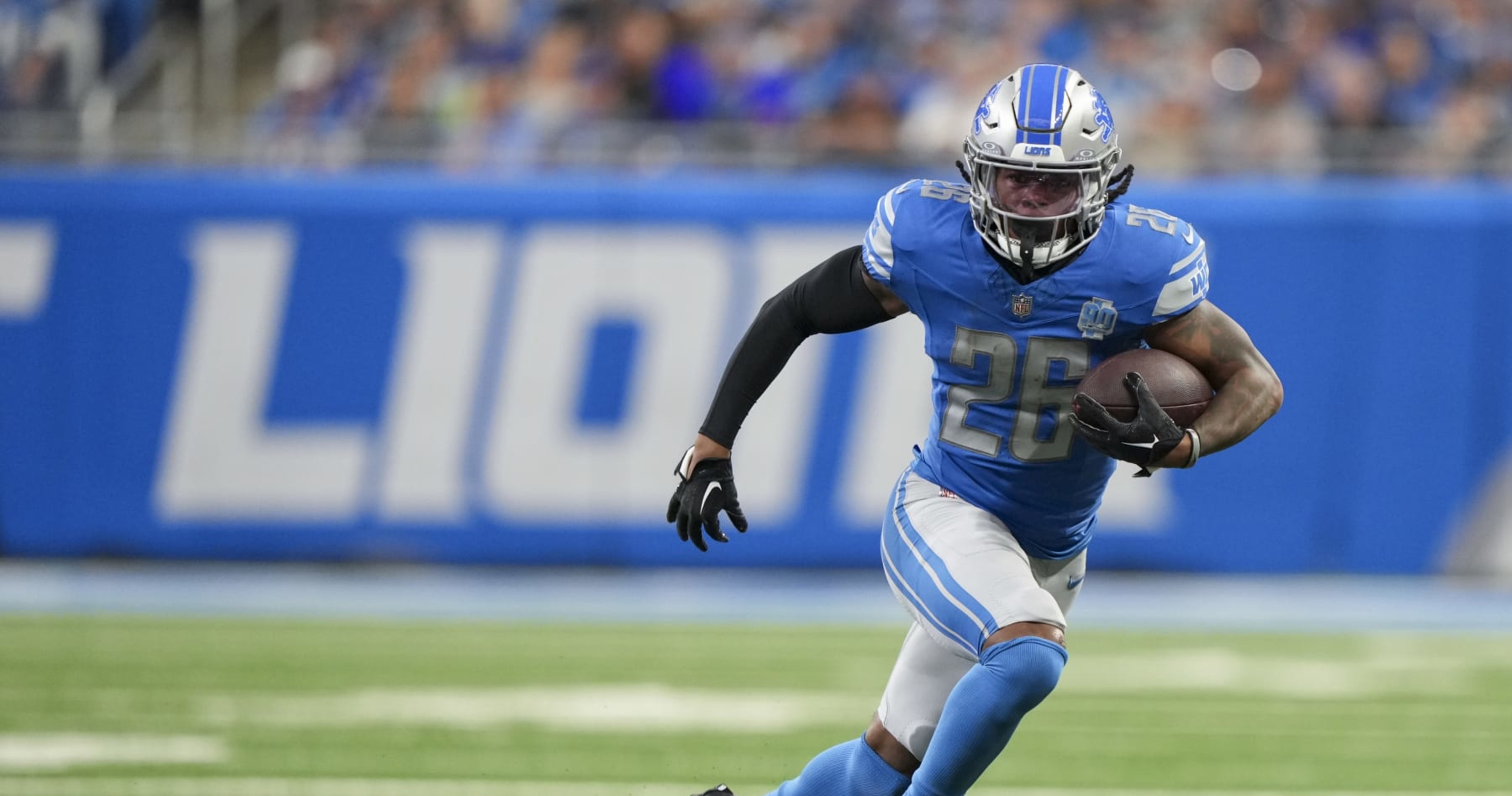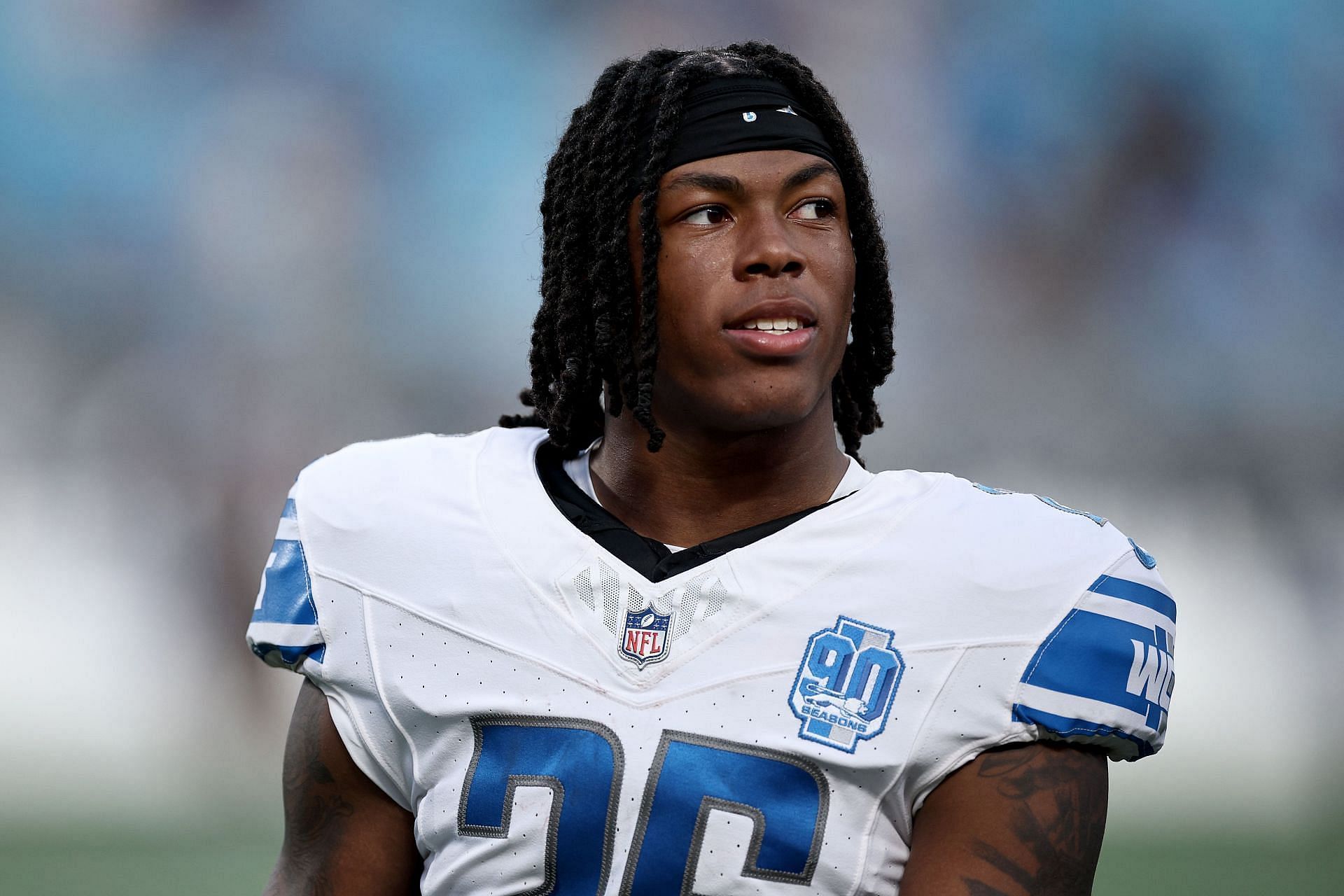Jahmyr Gibbs’ Injury History

Jahmyr Gibbs has a history of injuries, some of which have significantly impacted his performance. While some injuries are relatively minor, others have required extended recovery periods, raising concerns about his long-term health and potential for future injuries. This history provides insight into the types of injuries he is prone to and the potential impact on his career.
Previous Injuries
A timeline of Jahmyr Gibbs’ past injuries reveals a pattern of recurring injuries, primarily affecting his lower body.
- 2019: While playing for the University of Alabama, Gibbs sustained a hamstring injury during spring practice. This injury limited his participation in early-season games but did not require significant time off.
- 2020: Gibbs experienced a knee injury during the 2020 season, requiring surgery and causing him to miss several games. The injury occurred during a practice session and involved the anterior cruciate ligament (ACL).
- 2021: Gibbs suffered a foot injury during the 2021 season, forcing him to miss several games. The injury was a Lisfranc fracture, a common injury in athletes that affects the bones and ligaments in the midfoot.
- 2022: Gibbs suffered a shoulder injury during the 2022 season, but it did not require surgery. The injury was a separated shoulder, a common injury in contact sports.
Potential Long-Term Effects
The repeated nature of these injuries, particularly those involving the lower body, raises concerns about potential long-term effects on Gibbs’ health and performance.
- Increased Risk of Re-injury: Repeated injuries to the same area can weaken tissues and increase the risk of re-injury. This is particularly concerning for injuries like the ACL, which can take a long time to heal and may leave the joint vulnerable to future damage.
- Chronic Pain and Reduced Mobility: Chronic pain and reduced mobility are common consequences of repeated injuries. These issues can impact an athlete’s performance and limit their ability to train and compete at their peak.
- Early Retirement: In severe cases, repeated injuries can lead to early retirement from professional sports. This is especially true for athletes who play high-impact sports, such as football.
Injury Mechanisms and Potential Links, Jahmyr gibbs injury
Understanding the mechanisms of these injuries can provide insight into the potential causes of Gibbs’ current injury and potential preventative measures.
- Hamstring Injuries: Hamstring injuries are often caused by sudden bursts of speed or changes in direction, which can strain the muscles and tendons. These injuries are common in athletes who participate in activities that require explosive movements.
- Knee Injuries: ACL injuries are typically caused by a twisting motion or a direct blow to the knee. These injuries can occur during landing, pivoting, or contact with another player.
- Foot Injuries: Lisfranc injuries occur when the bones in the midfoot are displaced or fractured. These injuries can be caused by direct impact, twisting motions, or repetitive stress on the foot.
- Shoulder Injuries: Separated shoulders occur when the ligaments that connect the collarbone to the shoulder blade are stretched or torn. These injuries are often caused by direct impact or a fall onto the shoulder.
The Current Injury and its Impact: Jahmyr Gibbs Injury

Jahmyr Gibbs, the talented running back for the Detroit Lions, has recently been sidelined with an injury, causing concern for fans and the team alike. Understanding the nature, severity, and potential implications of this injury is crucial to assessing its impact on Gibbs’ immediate and long-term playing prospects.
The Nature and Severity of the Injury
Gibbs is currently dealing with a high ankle sprain. This injury occurs when the ligaments that connect the lower leg bones to the ankle are stretched or torn. The severity of a high ankle sprain can vary, ranging from mild to severe, depending on the extent of ligament damage. In Gibbs’ case, the exact severity of the sprain has not been publicly disclosed, but reports suggest it is a significant injury that will require a substantial recovery period.
Potential Causes of the Injury
High ankle sprains can occur due to a variety of factors, including:
- Direct impact: A direct blow to the ankle, such as a tackle during a game, can cause a high ankle sprain.
- Twisting motion: A sudden twisting or rolling motion of the ankle can also lead to this injury.
- Repetitive stress: Repeated strain on the ankle, such as during rigorous training or prolonged gameplay, can contribute to the development of a high ankle sprain.
- Pre-existing conditions: Previous injuries to the ankle or surrounding structures may increase the risk of developing a high ankle sprain.
Anticipated Recovery Timeline
The recovery timeline for a high ankle sprain can vary significantly depending on the severity of the injury, individual factors, and the effectiveness of treatment. In general, mild sprains may take a few weeks to heal, while severe sprains can require several months of rehabilitation.
- Initial Phase: The initial phase of treatment typically involves rest, ice, compression, and elevation (RICE) to reduce inflammation and pain.
- Rehabilitation Phase: Once the initial inflammation subsides, rehabilitation exercises begin to restore range of motion, strength, and stability in the ankle. These exercises may include stretching, strengthening, and proprioceptive training.
- Return to Play: The return to play decision is based on the individual’s progress and the assessment of their functional capacity. It is crucial to ensure the ankle is fully healed and stable before resuming full athletic activity to minimize the risk of re-injury.
Impact on Gibbs’ Playing Prospects
Gibbs’ high ankle sprain will undoubtedly impact his immediate playing prospects. It is highly likely that he will miss a significant portion of the upcoming season, depending on the severity of the injury and the progress of his rehabilitation. The Lions will need to rely on other running backs during Gibbs’ absence, potentially affecting their offensive strategies and overall performance.
In the long term, the impact of this injury on Gibbs’ playing prospects is difficult to predict. However, with proper rehabilitation and management, he should be able to make a full recovery and continue his promising career. It is essential for Gibbs to prioritize his recovery and follow his rehabilitation program diligently to ensure a safe and successful return to the field.
Implications for Jahmyr Gibbs and his Team

Jahmyr Gibbs’ injury has significant implications for both his individual performance and the success of his team. His absence from the field creates a void in the offense, forcing adjustments and potentially impacting their overall offensive output. Additionally, the injury could also have ramifications for Gibbs’ future prospects in the NFL draft.
Impact on Team Performance
Gibbs’ injury significantly impacts his team’s offensive performance. He is a dynamic playmaker who can contribute as both a runner and a receiver. His absence creates a void in the backfield, forcing the team to rely on backup players who may not possess the same level of talent or experience.
The team’s offensive scheme may need to be adjusted to compensate for Gibbs’ absence. This could involve shifting the focus to a more balanced approach, relying more heavily on the passing game or utilizing different personnel groupings. The effectiveness of these adjustments will depend on the quality of the backup players and the team’s ability to adapt quickly.
Impact on Draft Stock
Gibbs’ injury could potentially impact his draft stock, as NFL teams value players with a strong track record of health and durability. While Gibbs possesses impressive talent and potential, the injury history could raise concerns for teams, particularly if the injury is severe or recurring.
However, it is important to note that Gibbs’ talent and potential remain high, and the injury may not necessarily deter all teams from drafting him. Teams will need to weigh the risk associated with his injury history against his potential upside.
Performance Statistics
| Before Injury | After Injury | |
|---|---|---|
| Games Played | [Number of games played before injury] | [Number of games played after injury] |
| Rushing Yards | [Total rushing yards before injury] | [Total rushing yards after injury] |
| Rushing Touchdowns | [Number of rushing touchdowns before injury] | [Number of rushing touchdowns after injury] |
| Receiving Yards | [Total receiving yards before injury] | [Total receiving yards after injury] |
| Receiving Touchdowns | [Number of receiving touchdowns before injury] | [Number of receiving touchdowns after injury] |
This table provides a comparison of Gibbs’ performance statistics before and after the injury. By analyzing the data, we can gain insights into the extent of the impact the injury has had on his performance.
Jahmyr gibbs injury – Right, so Jahmyr Gibbs got injured, which is a right bummer, innit? Like, he’s a proper baller, but I’m more concerned about the vikings qb situation, to be honest. I mean, who’s gonna throw the ball to Gibbs when he’s back?
It’s all a bit of a mess, really.
Gutted for Jahmyr Gibbs, man, that torn meniscus is a proper bummer. Recovery time for that kinda thing can vary, but you can check out torn meniscus recovery time to get a better idea. Hopefully, Gibbs is back on the field soon, smashing it like he always does.
